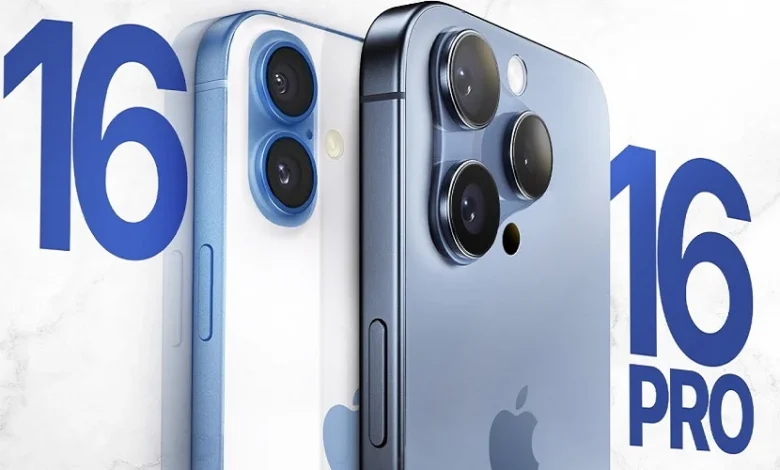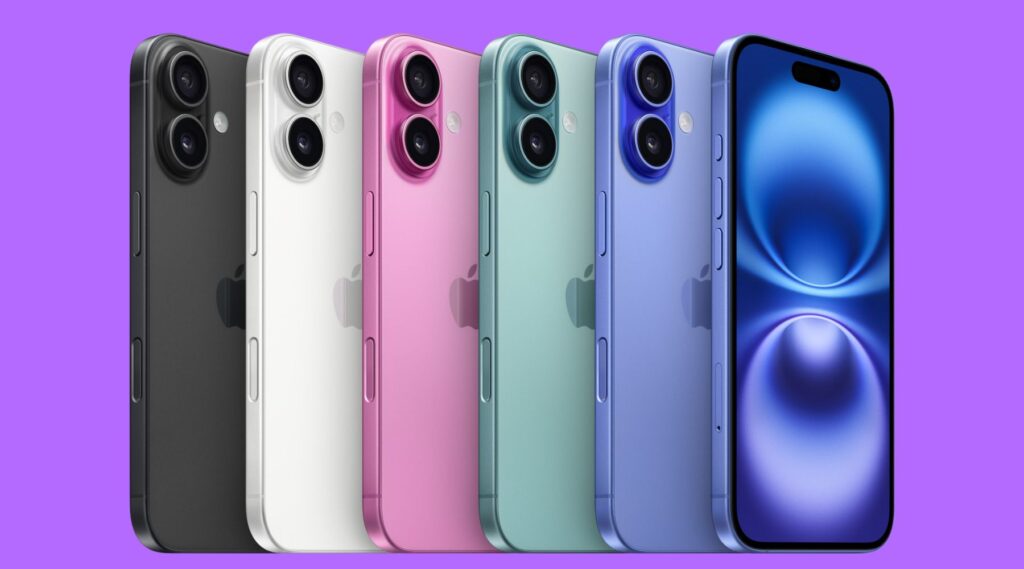Understanding iPhone 16 Price: What to Expect and How It Compares

Introduction to iPhone 16 Price
The iPhone 16 Price holds significant importance in the constantly evolving landscape of mobile technology. As Apple continues to release new iterations of its flagship smartphone, understanding the pricing strategy behind these models is crucial for consumers and industry analysts alike. The iPhone 16 price is anticipated to reflect not only the cutting-edge features and innovations that Apple is known for but also the economic factors that influence consumer purchasing behavior.
Several key factors contribute to the pricing of new iPhone models, including advancements in technology, production costs, and market demand. As Apple invests heavily in research and development, the incorporation of innovative features such as improved camera systems, enhanced battery life, and advanced processing capabilities can lead to a higher retail price. Furthermore, changes in materials, such as the use of premium metals and glass for durability and aesthetic appeal, can further influence the overall cost.
In addition to production costs, market trends play a significant role in determining the iPhone 16 price. The competitive landscape of smartphones continues to evolve, with various brands attempting to capture the same user base. Apple’s pricing strategies often consider these competitors, ensuring that their offerings remain attractive to consumers while maintaining their premium brand positioning. Notably, consumer expectation also drives pricing; as customers become accustomed to certain features and specifications, they may be willing to invest more in new models that promise enhanced performance.
The iPhone 16 price will undoubtedly impact Apple’s market share and sales performance, making it a critical aspect for potential buyers and industry observers to monitor. A comprehensive understanding of these pricing dynamics will provide valuable insights not only for consumers when making purchasing decisions but also for analysts forecasting trends in the tech market.
Expected iPhone 16 Price Range
The pricing of new iPhone models is always a topic of significant interest among consumers and technology enthusiasts. Based on trends from previous releases, it is expected that the iPhone 16 price will align closely with its predecessors, with a few adjustments reflecting advancements in technology and inflation. Historical data suggests that the base model of the new iPhone generally starts at a similar price point, which, in the case of the anticipated iPhone 16, may begin around $799.
As we have seen with prior iterations, such as the iPhone 14 and 15, Apple tends to offer multiple configurations, particularly differentiating between standard models and the Pro series. The iPhone 16 Pro and Pro Max versions are likely to command higher prices, typically starting around $999 and possibly exceeding $1,099 for models with expanded storage capabilities. Speculation also suggests that the introduction of enhanced features, such as improved camera systems and display technology, could drive the cost upward.
Moreover, the iPhone 16 pricing strategy is expected to include variations based on storage options. Consumers can anticipate that the price will increase accordingly with greater storage capabilities, which is a standard practice across the iPhone lineup. For instance, while the base model may offer 128GB of storage for the lowest price, higher tiers may support 256GB or even 512GB, aligning with increasing data needs of users today. As we inch closer to the official launch, further leaks and details will shed more light on the expected iPhone 16 price, but a general estimate remains within a familiar range for Apple enthusiasts.
Factors Influencing iPhone 16 Price
The price of the iPhone 16 will likely be influenced by a multitude of factors that encompass both internal and external variables. One significant factor is the production costs associated with the device. As Apple continues to integrate sophisticated components, such as advanced chips and enhanced display technologies, the manufacturing expenses are expected to increase. Materials sourced for the iPhone 16, including rare metals and cutting-edge glass, can also impact overall pricing. Thus, an increase in production costs could lead to a higher retail price for consumers.
Technological advancements play a key role in shaping the iPhone 16 price as well. As new features and capabilities are incorporated into the phone, such as improved camera systems, enhanced battery life, and innovative software functionalities, these elements may contribute to an upward adjustment in pricing. Consumers generally expect premium offerings to come at a premium price, further establishing a correlation between innovation and cost.
Market demand and competitive pricing are crucial components in determining the final price point of the iPhone 16. As Apple aims to maintain its market share, it must carefully consider how much consumers are willing to pay while keeping an eye on the competitive landscape. Rival brands may offer similar features at different price points, challenging Apple to justify its pricing strategy. Moreover, economic factors, including inflation rates and currency fluctuations, can also play a role in the iPhone 16 price. A weaker currency may lead to increased costs for imported components, inevitably affecting consumer pricing. Overall, a comprehensive examination of these factors is essential for understanding how the iPhone 16 price may evolve in the market.
Comparative Analysis: iPhone 15 vs. iPhone 16 Price
The pricing structure of smartphones plays a crucial role in consumer decision-making, and this is especially true for flagship devices from Apple, such as the iPhone 15 and the upcoming iPhone 16. Understanding the variations in price between these models can provide invaluable insights for potential buyers. The iPhone 15 was launched with a base price starting at approximately $799. As consumers anticipatethe release of the iPhone 16, industry analysts predict significant interplay in pricing due to the smartphone’s evolving features and technology.
One of the notable trends observed when comparing the iPhone 15 price to its successor is the incremental cost that typically aligns with enhanced features. The iPhone 16 is expected to integrate advanced technology, such as upgraded camera systems, improved battery life, and new processing capabilities, which could potentially elevate its starting price point. Estimates suggest that the base model of the iPhone 16 may see a price increase, landing around $899 or more, depending on the configurations chosen.
When analyzing the pricing strategies, it is important to consider the value proposition offered by Apple with each new iteration. The iPhone 15 included improvements over the previous model, helping to justify its price. Similarly, if the iPhone 16 delivers substantial enhancements that significantly improve the user experience, consumers may view the higher price as justified. However, factors such as market demand, inflation rates, and competitive landscape also play a role in determining the final price adjustment.
In comparing the iPhone 15 and iPhone 16 price, it becomes clear that prospective buyers must weigh the additional features and technological advancements against the potential price increase. As Apple continues to innovate, understanding these price dynamics becomes essential in making informed purchasing decisions in the rapidly evolving smartphone market.

Regional Price Variations for iPhone 16
The pricing of the iPhone 16 is expected to exhibit notable variations across different geographical regions, largely influenced by local market dynamics, taxes, and regulatory factors. In the context of the global smartphone market, the cost of the iPhone 16 can be markedly different from one country to another, making it essential for potential buyers to be mindful of these discrepancies. For example, in countries with high import duties and taxes, the iPhone 16 price can increase significantly, impacting affordability.
In the United States, the iPhone 16 price will likely align with Apple’s traditional pricing strategies, which generally position the device competitively against other flagship smartphones. One can anticipate that the Apple Store pricing will be more straightforward in this market due to the absence of complicated import tariffs. In contrast, regions such as Europe may see higher prices due to value-added tax (VAT) and additional import fees. This combination often leads to a higher final cost for consumers in these markets.
Additionally, emerging markets may have their own pricing structures as Apple adjusts its strategy to accommodate local purchasing power. For instance, in countries like India or Brazil, the iPhone 16 price might be tailored to ensure that the device remains competitive while also addressing the economic realities of potential customers. This regional pricing approach reflects Apple’s effort to penetrate diverse markets while maintaining premium brand positioning.
Understanding these regional price variations for the iPhone 16 is crucial for consumers who wish to make an informed purchasing decision. By accounting for factors such as import duties, local taxes, and market strategies, prospective buyers can better navigate the pricing landscape when considering the latest iPhone model.
Offers and Promotions Impacting iPhone 16 Price
The pricing strategy for the iPhone 16 is expected to be influenced by a variety of promotional offers and carrier deals that make it more accessible to a broader audience. Apple typically engages in promotional events around major product launches, holidays, and shopping seasons, which can significantly affect the effective price consumers ultimately pay. For instance, Black Friday or Cyber Monday promotions often include discounts or bundled deals that can alleviate the upfront cost of the device.
In addition to seasonal sales, trade-in programs are an important consideration for those looking to purchase the iPhone 16. Apple and various carriers frequently offer incentives for users to exchange their older devices, which can dramatically reduce the overall cost. Consumers contemplating an upgrade should explore these trade-in offers, as they not only lessen the financial burden but may also include additional credits towards accessories or services.
Carrier deals play a crucial role as well. Major cellular providers often provide special promotions, such as discounted pricing on the iPhone 16 when purchased through a specific plan. These deals can vary, with some carriers potentially offering significant subsidies that could bring the price down considerably. Customers should compare these offers to determine which provides the most value based on their individual usage patterns, needs, and financial circumstances.
Furthermore, early adoption periods can witness promotional pricing, where retailers work to boost initial sales figures through attractive offers. Consumers might find that the effective price of the iPhone 16 can fluctuate based on these temporary promotions. Ensuring awareness of these factors can help prospective buyers make informed decisions and maximize their savings when acquiring the new device.
How to Get the Best Deal on iPhone 16
Purchasing a new iPhone 16 can represent a significant financial commitment. However, there are several strategies consumers can employ to secure the best deal and optimize their spending. Timing plays a crucial role in obtaining the iPhone 16 at a favorable price. Typically, Apple tends to announce new models in September, causing older models’ prices to drop. Therefore, purchasing soon after a launch may not always yield the best savings. Waiting a few months post-release or during major sales events, such as Black Friday or Cyber Monday, often results in attractive deals and promotions.
Another effective approach is to research and compare prices across multiple retailers. Authorized Apple resellers may offer competitive pricing, especially during holiday seasons or by providing bundle deals that include accessories. Websites and apps aggregating prices from various vendors can simplify this process, allowing consumers to easily identify the lowest offers available.
Additionally, many carriers present enticing deals when consumers switch their service or add a new line. These promotions might include significant discounts or financing options for the iPhone 16, effectively reducing the overall cost. It is imperative for consumers to carefully assess the terms of these carrier plans to ensure they align with their long-term budget and usage patterns.
Leveraging trade-in values is another significant way to offset the iPhone 16 price. Apple and various retailers provide trade-in programs where consumers can exchange their old devices for credit toward a new purchase. This option can substantially decrease the overall amount spent on the new iPhone. By conducting research on potential trade-in values, one can maximize savings while upgrading to the latest model.
In conclusion, securing the best deal on the iPhone 16 involves strategic timing, diligent research across retailers, leveraging carrier promotions, and effectively utilizing trade-in credits. By applying these strategies, consumers can better navigate the purchasing process and enhance their overall savings.
User Expectations and Value for Money
As the anticipation builds around the iPhone 16, consumers are increasingly vocal about their expectations regarding its price and value proposition. Shoppers now expect more than just cutting-edge technology; they desire features that justify the iphone 16 price. Analysts suggest that today’s consumers are well-informed, often conducting extensive research before making decisions. They compare pricing and features not just within the Apple ecosystem, but against a plethora of smartphones available on the market.
When discussing value for money, the iphone 16 price must be contextualized within the competitive landscape. Price sensitivity has always existed among smartphone users, but as features such as camera quality, battery life, and user experience improve across various brands, the demand for tangible benefits increases. Consumers often analyze whether the investment leads to enhanced productivity, photography capabilities, or a more enjoyable user experience. With the iPhone 16 expected to introduce advancements like improved AI features and enhanced processing speeds, users will evaluate these upgrades against the cost that Apple is likely to set.
Recent surveys have revealed that many users are willing to pay a premium if the features align with their needs. However, they also anticipate a reasonable connection between the iphone 16 price and the functionality it offers. For some, the allure of the brand and ecosystem may outweigh pricing concerns; others, particularly first-time or budget-conscious buyers, may look elsewhere if they perceive insufficient value. The challenge for Apple will be to provide compelling reasons for the targeted selling price while positioning the iPhone 16 as a worthwhile investment compared to competitive models. Ultimately, the feedback from these consumers will shape how the iphone 16 price is received when it finally launches.
Conclusion: Anticipating the iPhone 16 Price Launch
As the launch of the iPhone 16 approaches, consumers and enthusiasts alike are left speculating about the potential pricing strategies Apple may employ. Historically, Apple has adhered to specific pricing tiers for its flagship products, and it is reasonable to expect the iPhone 16 price to reflect trends established with its predecessors, particularly the iPhone 14 and 15 models. Notably, advancements in technology and upgraded features might lead to an adjusted price structure for the upcoming release.
In recent iterations, Apple has introduced various models within the same generation, offering consumers options that vary in price based on features and specifications. This trend might continue with the iPhone 16, potentially leading to a tiered pricing system. Consideration of various factors such as increased production costs, enhancements in hardware, and expansions of services could influence the pricing strategy significantly. Given this, it is advisable for potential buyers to prepare for a range of prices depending on the model selected and available configurations.
As we await the official announcement, it is essential for consumers to stay informed through reliable tech outlets and the company’s communications. Tracking news and rumors surrounding the iPhone 16 price will empower buyers, allowing for a well-informed purchasing decision when the product is released. With varying expert forecasts aiming to predict pricing trends, keeping abreast of updates will ensure that consumers have the most accurate information as the launch date nears. As a final note, understanding the overall market trends and consumer demand will play a vital role in shaping the final prices for the iPhone 16, making informed anticipation key to mastering the upcoming launch.
You May Also Read This Bettermentbusiness.



